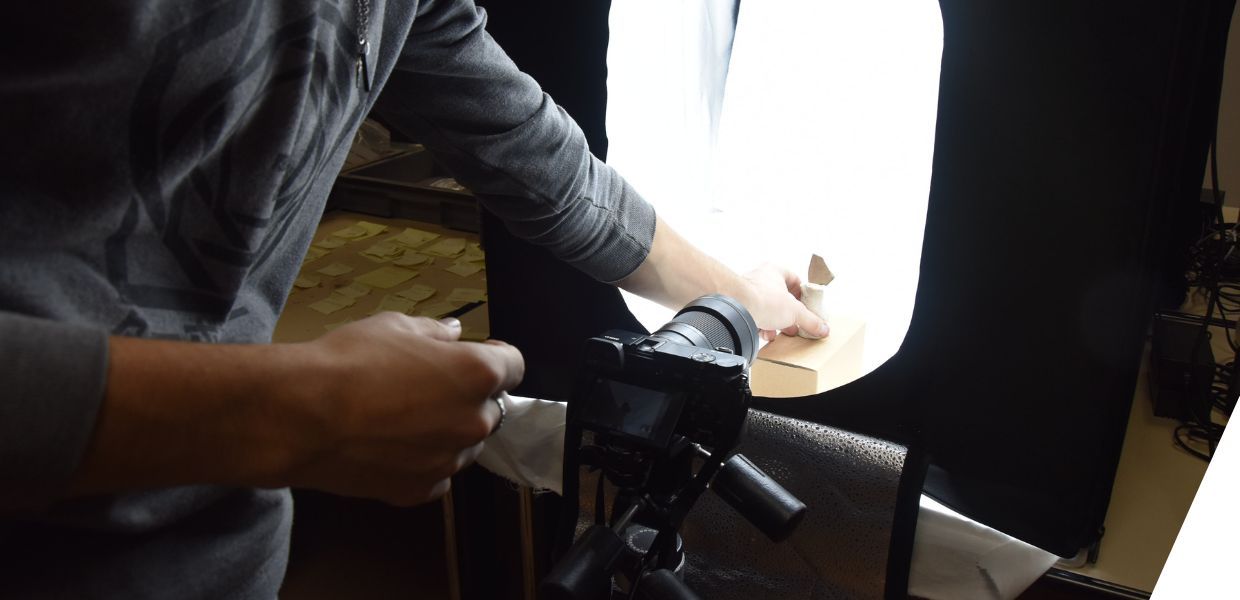Bibracte, EUreka 3D and oppidum
The EUreka3D project (European Union's REKonstructed content in 3D) aims to make Europe's heritage freely available to the public in 3D by equipping research establishments with a suite of tools for producing, managing and exploiting digital data. Eureka3D is developing an online platform that allows for the uploading, management and data mapping of 3D objects, including their metadata and paradata. It will be available by September 2024.
As part of the EUreka3D project, at Bibracte we are working to provide around 400 3D scans of furniture, structures and terrain from Mont Beuvray (Burgundy, France). Bibracte is the name of the old Gallic oppidum, a city on a hill from the first Century AD. Bibracte was the capital of the Aedui during the Ancient Roman Empire, and was famously conquered by Julius Caesar and his army at the battle of Bibracte in 58 AD. It remained inhabited until the turn of the 21st Century.
At Bibracte, our interest in 3D digitisation is around creating theoretical models of objects that enable us to visualise mathematical properties of an object. These properties would give us the dimensions of the 'standard' or 'ideal' object, i.e. the 'standard' chair or 'standard' vase dimensions. This in turn enables us to recognise where there are deviations in vase types, or how new types of objects develop. It also allows us to find exactly where a small piece of an object, like a broken vase, would fit into the larger object.
The 400 3D objects we are 3D digitising represent artefacts from the wide history of Bibracte. They include objects from the Celtic oppidum in the Late Iron Age, to the monastics of the Couvent des Cordeliers, established in the 14th century and frequented by Franciscans until the very end of the 17th century. The institution's partners are involved at every stage in the production, use and distribution of 3D scans.
France is making strides when it comes to preserving archaeological treasures using 3D technologies. For the Twin It! 3D for Europe’s Culture campaign, which invited all EU Member States to submit one 3D digitised object to the common European data space for cultural heritage, France shared a full 3D scan of its famous Caves of Lascaux, an important archaeological treasure.
Training and research
For Bibracte, one of the challenges of this project is to create links in the data between the objects preserved and displayed in the French database of the Conservatoire National des Données 3D, a national online archive of 3D cultural heritage, and Europeana.eu.
In this context, Josef Wilczek, Senior Lecturer in Digital Archaeology at Sorbonne Université and partner in the Bibracte research programme, ran a theoretical and practical course for six students at the European Archaeological Centre (Centre archéologique européen) from 13 to 17 November 2023.
Wilczek engages in research on 3D digital cultural heritage by developing software packages. They are based on the automatic acquisition, systematic calculation and restitution (restoration of something that has been altered) of metric, statistical, typo-chronological and stylistic data. The latter is based in particular on batches of ceramic shards collected during excavations on Mont Beuvray. Automated approaches to 3D digitisation and curation optimize certain time-consuming technical operations, freeing up resources for archaeologists. Wilczek, through his research, is helping to expand Bibracte's digital corpus, raising awareness and training the next generation of digital archaeologists.
Find out more
You can find out more about Bibracte on their website, and the work that Europeana is undertaking around 3D on the Twin it! webpage.

